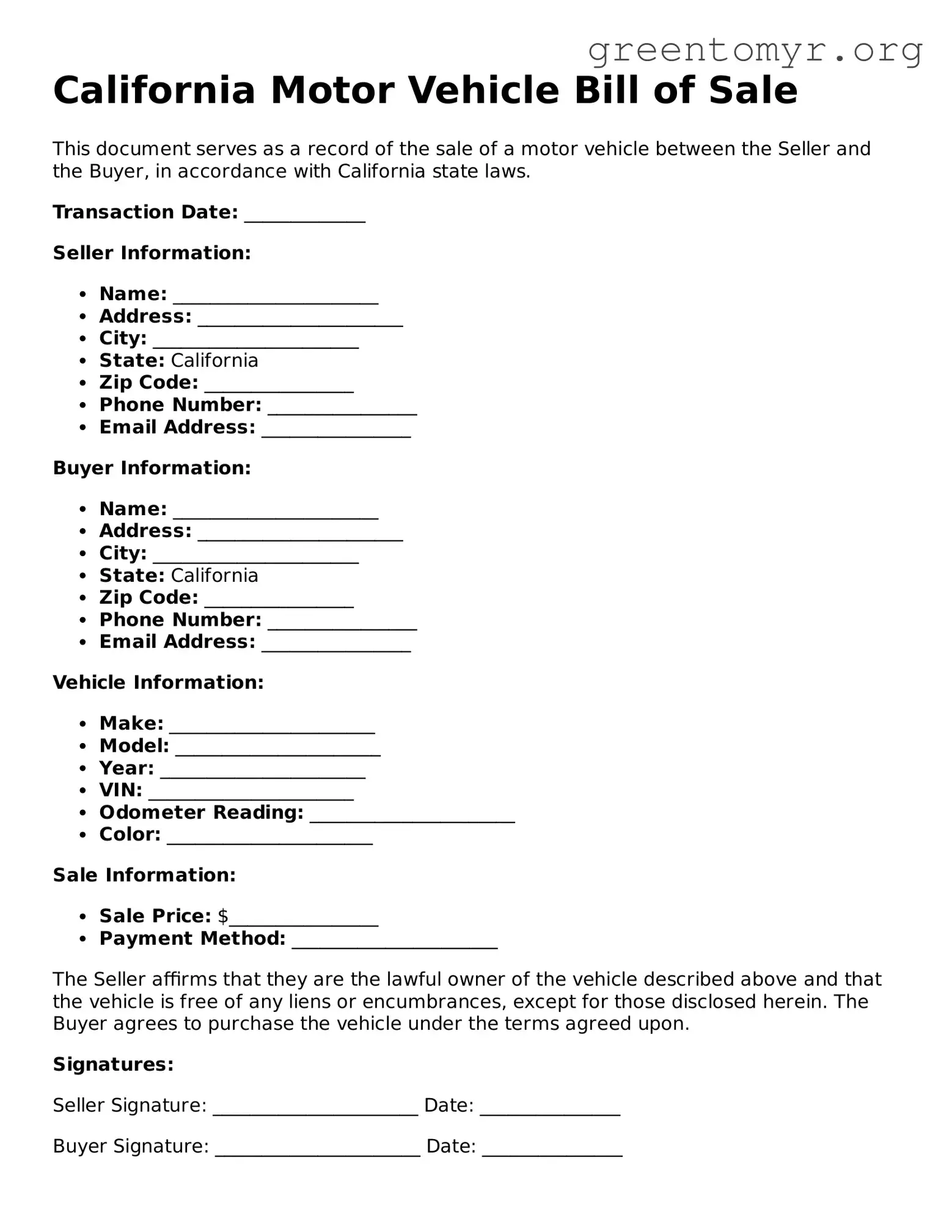California Motor Vehicle Bill of Sale
This document serves as a record of the sale of a motor vehicle between the Seller and the Buyer, in accordance with California state laws.
Transaction Date: _____________
Seller Information:
- Name: ______________________
- Address: ______________________
- City: ______________________
- State: California
- Zip Code: ________________
- Phone Number: ________________
- Email Address: ________________
Buyer Information:
- Name: ______________________
- Address: ______________________
- City: ______________________
- State: California
- Zip Code: ________________
- Phone Number: ________________
- Email Address: ________________
Vehicle Information:
- Make: ______________________
- Model: ______________________
- Year: ______________________
- VIN: ______________________
- Odometer Reading: ______________________
- Color: ______________________
Sale Information:
- Sale Price: $________________
- Payment Method: ______________________
The Seller affirms that they are the lawful owner of the vehicle described above and that the vehicle is free of any liens or encumbrances, except for those disclosed herein. The Buyer agrees to purchase the vehicle under the terms agreed upon.
Signatures:
Seller Signature: ______________________ Date: _______________
Buyer Signature: ______________________ Date: _______________
This Bill of Sale is executed in duplicate, with each party receiving one copy.
For any questions, refer to California Vehicle Code Section 5901.
